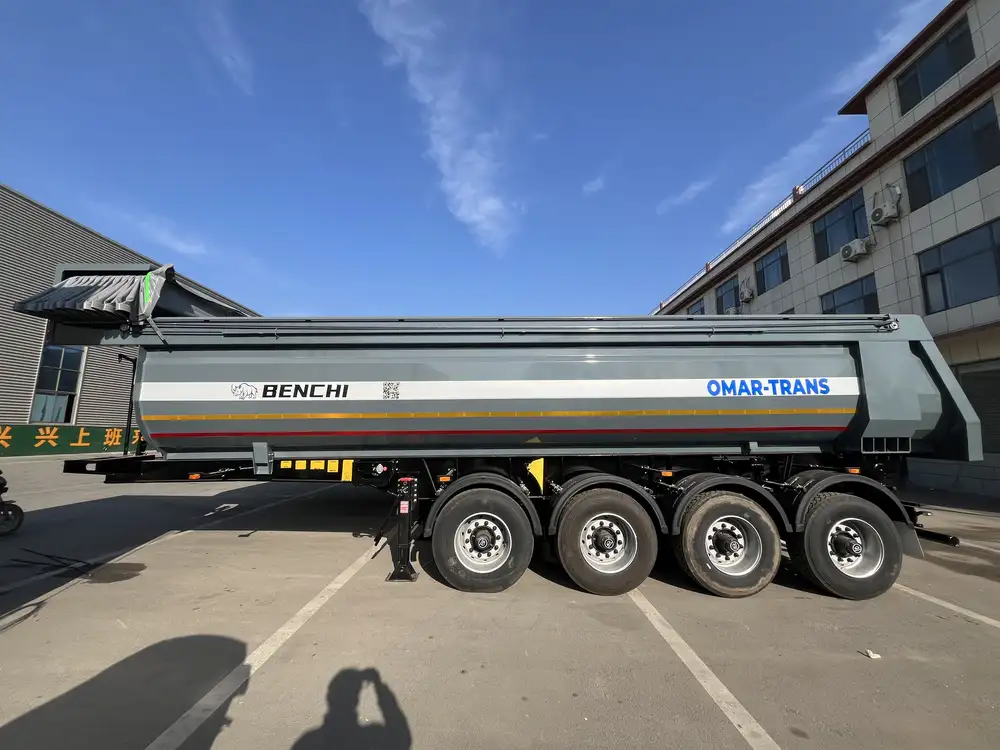Loading a substantial weight, such as 44,000 pounds, onto a 53-foot flatbed trailer requires precision, careful planning, and adherence to safety standards. Understanding the mechanics and logistics involved in loading this weight efficiently and safely is paramount for truck drivers, logistics managers, and fleet operators. This article provides an in-depth exploration of best practices, techniques, and strategies that ensure an optimal loading process.
Understanding Trailer Specifications
Before diving into loading techniques, it’s crucial to understand the specifications of a 53-foot flatbed trailer. Typically, a standard trailer has the following characteristics:
| Specification | Details |
|---|---|
| Length | 53 feet |
| Width | 8.5 feet (102 inches) |
| Height | Typically 5 feet (with tarps) |
| Weight Capacity | Up to 48,000 pounds (varies by model) |
| Axles | Typically 2 to 3 |
| Deck Type | Wood, aluminum, or composite |
Key Features Impacting Loading
- Axle Configuration: The number of axles affects weight distribution and permissible load limits.
- Tarps and Equipment: Depending on the cargo type, securing tarps and additional equipment is essential for safety.
- Material of the Deck: Different materials (wood vs. aluminum) have varying weight limits and durability.

Preparation for Loading
Assessing the Load
When preparing to load 44k lbs, the first step is to assess the cargo. Categories may include:
- Heavy Machinery: Construction vehicles, excavators, etc.
- Palletized Goods: Multiple packages stacked on pallets.
- Bulk Items: Such as steel or lumber.
Calculating Load Distribution
Proper weight distribution is crucial to ensure safety during transit. An ideal weight distribution would follow the 60/40 or 70/30 rule between the front and rear.

Recommended Load Distribution Table
| Load Type | Front (60%) | Rear (40%) | Total Load |
|---|---|---|---|
| Heavy Machinery | 26,400 lbs | 17,600 lbs | 44,000 lbs |
| Palletized Goods | 29,800 lbs | 14,200 lbs | 44,000 lbs |
| Bulk Items | 31,200 lbs | 12,800 lbs | 44,000 lbs |
Equipment and Safety Gear
Before loading, ensure you have the necessary equipment:
- Forklifts or pallet jacks for heavy items.
- Ratchet straps or chains for securing cargo.
- Personal protective equipment (PPE) including gloves, hard hats, and high-visibility vests.
Loading Process

Step 1: Position the Trailer
Position the flatbed trailer on stable, level ground. Ensure that no obstructions are in the way.
Step 2: Use a Spotter
Utilize a designated spotter to guide the loading process. This individual plays a vital role in ensuring the safety of both the cargo and workload.
Step 3: Gradual Loading
Gradually load the items onto the trailer. Employ the following key techniques:
- Use Ramps: If loading heavy machinery, ramps facilitate easier transitions onto the flatbed.
- Palletized Goods: Stack items correctly, maintaining stability, and ensuring even weight distribution.

Step 4: Securing the Load
Once loaded, it is essential to secure the cargo properly to prevent shifting during transport.
- Strapping: Use at least two straps per 5 feet of the load. Consider:
- Ratchet Straps: For standard loads.
- Chain Binders: For heavy machinery.
- Tarping: If applicable, cover the load with tarps, ensuring it is secured against wind and weather.
Step 5: Final Check and Adjustment
After securing the load:
- Perform a visual inspection.
- Check the tension on the straps/chains.
- Confirm that the load does not exceed the allowable height and length restrictions.
Legal Considerations

Weight Compliance
Understanding local and federal guidelines regarding weight limits is crucial. The standard limit for a truck and trailer combination is 80,000 lbs; however, individual states may have specific regulations regarding distributed weight per axle.
Permits and Licenses
When intending to transport up to 44K through various states, verify whether any overweight permits are needed.
- Special Hauling Permits: Required for loads exceeding standard weight limits.
- Route Approval: Some routes might be restricted for heavy loads, necessitating careful planning.
Troubleshooting Common Loading Issues

Uneven Weight Distribution
Ensure that each load is evenly distributed. If you notice imbalances:
- Redistribution of pallets or moving items slightly forward or backward can remedy the situation.
Securing Problems
If straps or chains appear loose:
- Inspect for wear and tear.
- Retighten and, if necessary, replace any damaged securing equipment immediately.
Height Concerns
For loads that may potentially exceed height regulations:
- Adjust the load placement or consider alternative routes.

Best Practices for Safe Transport
Frequent Checks During Transit
Conduct frequent stops to check the load during transport. Look out for:
- Straps that have loosened.
- Signs of shifting in the load itself.
Functioning Equipment Maintenance
Regularly maintain all equipment used during loading:
- Check forklifts, ramps, and securing devices for functionality.
- Follow recommended maintenance schedules to prevent breakdowns.

Conclusion
Successfully loading 44,000 pounds onto a 53-foot flatbed trailer demands understanding and adherence to best practices in weight distribution, securing, and legal compliance. By equipping yourself with the right knowledge and tools, and prioritizing safety at every step, you can ensure efficient and secure transport of your cargo.
It’s essential to continuously educate yourself on evolving safety regulations and technologies that can enhance the loading and transporting process for flatbed trailers. Keeping abreast of these changes and adapting will not only keep you compliant but can also drive operational efficiency and profitability for your business.



